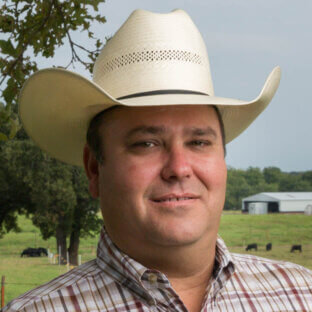When drought depletes our pastures, the cost of hay can sky-rocket and making full use of your hay becomes increasingly important. In these times, one factor to consider is the type of hay feeder you use.
In 2013, Oklahoma State University concluded a study that compared four common hay feeder designs:
- Modified cone (CONE)
- Open-bottomed steel ring (RING)
- Polyethylene pipe (POLY)
- Sheeted-bottom steel ring (SHEET).
Cattle were fed one bale in the assigned feeder prior to data collection to allow for an adjustment period. Hay waste data was collected at 24-hour intervals starting on day four of the second bale of hay fed and continued until day seven. The percentage of hay wasted was determined by weighing the amount of hay outside of the hay ring on each collection day.
Hay waste was the lowest for the CONE feeder, while the POLY feeder and the RING feeder had the highest percentage of waste (5.3 percent versus 21 percent and 20.5 percent, respectively). The SHEET ring feeder had intermediate wastage at 13 percent (see table).
Here is a practical example of how you can apply this research to your ranch operation:
The value of hay wasted was calculated using the following assumptions: A producer with 30 cows will feed 180 bales of hay that weigh 1,200 pounds each during a six-month period. Hay was valued at $70 per bale. Annually, the modified cone ring feeder will waste $667.80 worth of hay while the SHEET, RING and POLY feeders will waste $1,638; $2,583; and $2,646 worth of hay, respectively. In this example, the decrease in wasted hay will more than pay for the cost of the hay feeders.
Consideration must be given to the additional equipment requirements necessary for the modified cone ring feeder. This style of feeder will require the use of a tractor with a front-end loader to set the bale into the feeder. The sheeted steel ring, open-bottomed steel ring and polyethylene pipe ring feeders can all be placed over the hay bales by hand.
Contact your local county agent for assistance in determining hay needs for your herd and the cost of using the various types of hay feeders available in your area.



Where can you buy a cone feeder in Oklahoma? I have searched the internet and found nothing. James Stepp Hinton, OK
Stillwater Milling carries them across the state. Additionally, Hugo Farmers Cooperative may have them.
–Robert
I am the managing partner of Kreger Ranch, LLC at Tonkawa, OK. I am very interested in the idea of reducing hay waste. We think we do some good here, but want to do better.
Does OSU or Noble have specific design images or manufacturer recommendations for the “modified cone” style feeder?
Unfortunately, we do not have any designs for this type of feeder as most would not be able to construct the feeder due to the equipment required to make the curves. The original company has sold out to a larger distributor so they are more widely available. The following link will take you to the manufacturer website and you can see the design as well as to find a dealer. https://tarterusa.com/bextra-by-tarter-hay-feeder/